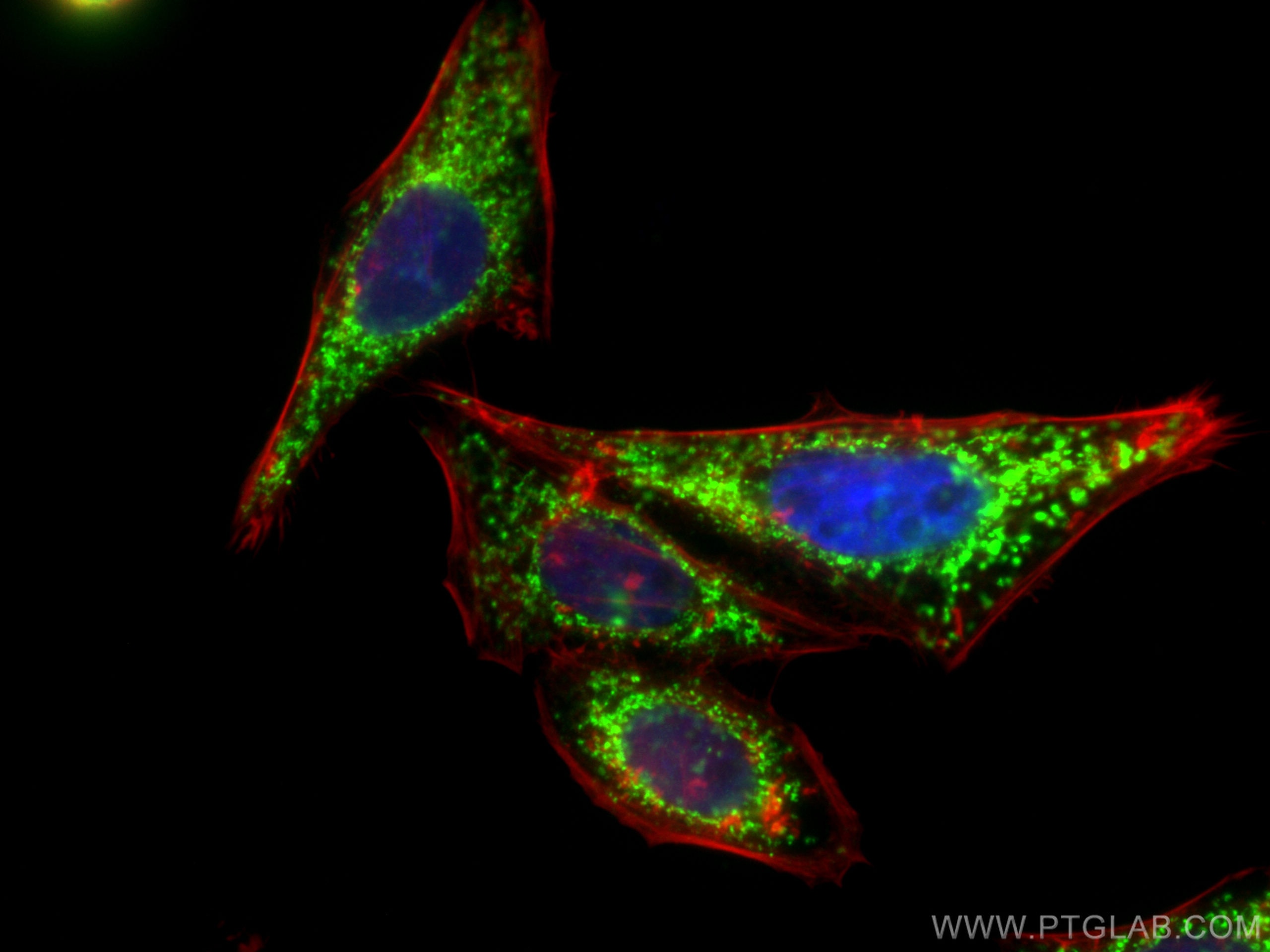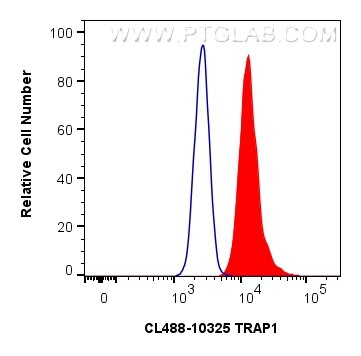- Featured Product
- KD/KO Validated
TRAP1 Polyklonaler Antikörper
TRAP1 Polyklonal Antikörper für IF/ICC, FC (Intra)
Wirt / Isotyp
Kaninchen / IgG
Getestete Reaktivität
human, Maus, Ratte
Anwendung
IF/ICC, FC (Intra)
Konjugation
CoraLite® Plus 488 Fluorescent Dye
Kat-Nr. : CL488-10325
Synonyme
Geprüfte Anwendungen
| Erfolgreiche Detektion in IF/ICC | HepG2-Zellen |
| Erfolgreiche Detektion in FC (Intra) | HeLa-Zellen |
Empfohlene Verdünnung
| Anwendung | Verdünnung |
|---|---|
| Immunfluoreszenz (IF)/ICC | IF/ICC : 1:50-1:500 |
| Durchflusszytometrie (FC) (INTRA) | FC (INTRA) : 0.80 ug per 10^6 cells in a 100 µl suspension |
| It is recommended that this reagent should be titrated in each testing system to obtain optimal results. | |
| Sample-dependent, check data in validation data gallery | |
Produktinformation
CL488-10325 bindet in IF/ICC, FC (Intra) TRAP1 und zeigt Reaktivität mit human, Maus, Ratten
| Getestete Reaktivität | human, Maus, Ratte |
| Wirt / Isotyp | Kaninchen / IgG |
| Klonalität | Polyklonal |
| Typ | Antikörper |
| Immunogen | TRAP1 fusion protein Ag0400 |
| Vollständiger Name | TNF receptor-associated protein 1 |
| Berechnetes Molekulargewicht | 80 kDa |
| Beobachtetes Molekulargewicht | 66-70 kDa, 60 kDa |
| GenBank-Zugangsnummer | BC000406 |
| Gene symbol | TRAP1 |
| Gene ID (NCBI) | 10131 |
| Konjugation | CoraLite® Plus 488 Fluorescent Dye |
| Excitation/Emission maxima wavelengths | 493 nm / 522 nm |
| Form | Liquid |
| Reinigungsmethode | Antigen-Affinitätsreinigung |
| Lagerungspuffer | PBS with 50% glycerol, 0.05% Proclin300, 0.5% BSA |
| Lagerungsbedingungen | Bei -20°C lagern. Vor Licht schützen. Nach dem Versand ein Jahr stabil. Aliquotieren ist bei -20oC Lagerung nicht notwendig. 20ul Größen enthalten 0,1% BSA. |
Hintergrundinformationen
TNF receptor-associated protein 1 (TRAP1, synonym: HSP75) is a member of the HSP90 family of molecular chaperones, and is expressed ubiquitously and located to mitochondria. A unique LxCxE motif in HSP75, but not in other HSP90 family members, appears to be important for binding to the simian virus 40 T-antigen-binding domain of hypophosphorylated Rb. Data also suggests that suppression of the expression of TRAP1 in mitochondria plays an important role in the induction of apoptosis caused via formation of reactive oxygen species (ROS).
Protokolle
| PRODUKTSPEZIFISCHE PROTOKOLLE | |
|---|---|
| IF protocol for CL Plus 488 TRAP1 antibody CL488-10325 | Protokoll herunterladen |
| FC protocol for CL Plus 488 TRAP1 antibody CL488-10325 | Download protocol |
| STANDARD-PROTOKOLLE | |
|---|---|
| Klicken Sie hier, um unsere Standardprotokolle anzuzeigen |



